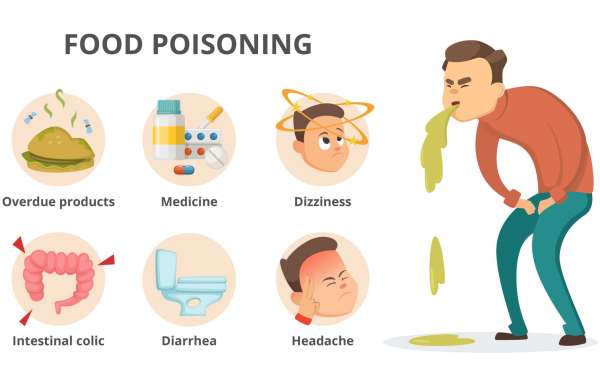Foodborne illness can result from eating contaminated, spoiled, or toxic food. Although no one is eager to get food poisoning, most people recover quickly with help from home remedies like rest and plenty of fluids.
Foodborne illnesses, commonly referred to as food poisoning or food-related illness, are illnesses caused by toxins and infections from food and water. Food poisoning can be caused by bacteria, viruses, or parasites that enter the body through contaminated food or water. A common type of poisoning is from the toxins produced by staphylococcus which can spread from a single contaminated tomato to an entire jar of salsa.
Most kinds of food poisoning have the same symptoms, including diarrhea, vomiting, fever, abdominal pain, and dehydration. Food poisoning caused by bacteria will usually last a little longer than other kinds of food poisoning.
Some of the following types of food poisoning are more serious than others. Some are caused by bacteria, and some are caused by viruses. Salmonellosis is a bacterial infection typically contracted by consuming food that has been contaminated with animal feces or microscopic amounts of contaminated water such as that found in raw eggs, dairy products and meat.
- Coli
Escherichia coli 0157:H7 is a type of E. coli that causes illness in humans. It is found in the intestines of healthy cattle and other animals, so it occurs in people after eating undercooked ground beef or unpasteurized milk or drinking water contaminated by animal waste. Also called E. coli O157, this infection stems from bacteria found in the digestive tract of animals. It causes abdominal pain, diarrhea (sometimes bloody), dehydration, and vomiting. Children under 5 and older adults are most susceptible to serious complications that can result from this disease. Some strains of E. coli also cause urinary-tract infections that may be asymptomatic or may have severe symptoms common to any bladder infection, ranging from an urgent need to urinate to fever and lower abdominal pain.
Listeria (Listeriosis)
Listeria monocytogenes is a bacterium that can cause the serious infection listeriosis. Listeriosis mostly affects newborns, pregnant women, and adults with weakened immune systems. The bacterium is usually harmless to healthy animals. It can be found in soil and water and can also be carried by farm animals. Uncooked meats or vegetables, as well as some foods prior to packaging, can carry this organism.
Norovirus
Norovirus often causes all-over body aches, vomiting, and diarrhea 24 to 72 hours after exposure. It is highly contagious, and infected individuals are most dangerous to others within a day before symptoms begin and three days after symptoms subside (the so-called "incubation period"). They should stay home from work for at least one day after their symptoms end to avoid passing the virus on to others.
Salmonella (Salmonellosis)
Salmonellosis is an illness caused by bacteria of the species Salmonella enteric, which can grow in food or water. Symptoms usually resolve within a few days; however, some illnesses may be so severe that hospitalization is required.
Enteric Viruses
It's easy to contract food-borne norovirus and hepatitis A, which are tied to an increasing number of food poisoning outbreaks in recent years, says Sharon Mena, a researcher at the National Food Safety and Toxicology Center in Ames, Iowa. "Besides diarrhea, people also typically experience vomiting." They're transmitted by eating contaminated food or water. In addition to shellfish, noroviruses can be contracted via produce and produce juices.
Botulism
Botulism is a potentially fatal form of food poisoning caused by the bacterium, Clostridium botulinum. It was first described in the late 18th century, though some historians believe it was also mentioned by Hippocrates about 2250 B.C. "It occurs more frequently in July, August and September," says Raul Mena, MD, associate professor of clinical emergency medicine at UM SOM and immediate past-president of Physicians for Social Responsibility.
Causes
Pathogenic microorganisms are primarily found in the gastrointestinal tract and feces of humans and animals. Pathogenic microbes can be transmitted to humans through sexual contact, blood transfusions, or by handling food or eating food with pathogens on it. They may also be transmitted via air-borne droplets from sneezing or coughing.






